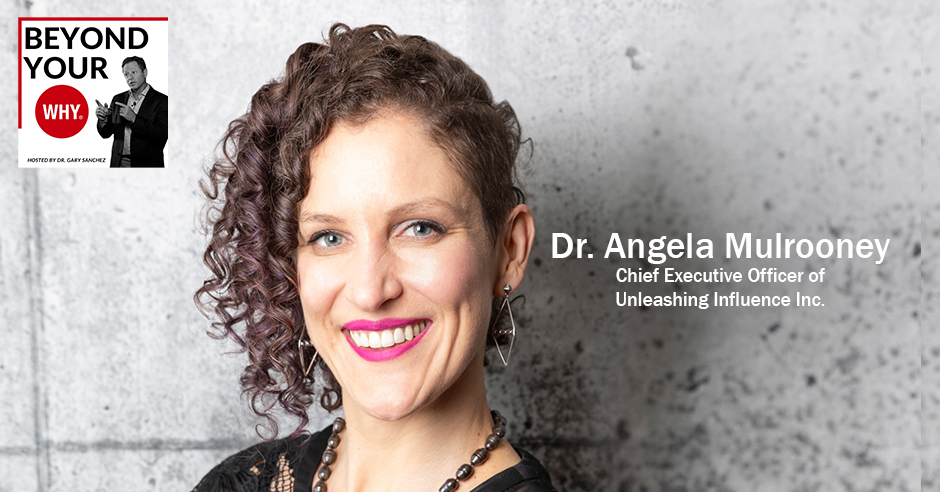
Dr. Angela Mulrooney is a global speaker, best-selling author, and personal branding expert. But before all that, she used to be an incredibly shy girl with such perfectionist standards. Although she aced the game of professional and academic achievements, her personal life had a hole she can’t seem to fill. That is what made her say enough is enough, and that it was time to find a better way. Joining Dr. Gary Sanchez, Dr. Mulrooney shares her personal journey and how her WHY of better way made her the strong, successful, fulfilled, and happy woman she is today. She also touches on how media platforms can be used to drive sales in clarifying your message and driving sales. Continuing her work with thought leaders and brand archetypes, Dr. Mulrooney shares how one can change the world with what they know.
—
Watch the episode here
Listen to the podcast here
Finding A Better Way: How To Change The World And Your Life With What You Know And Want With Dr. Angela Mulrooney
We are going to be talking about the Why of Better Way to find a better way and share it. If this is your why, you are someone who is the ultimate innovator. You are constantly seeking better ways to do everything. You find yourself wanting to improve virtually anything by finding a way to make it better. You also desire to share your improvement with the world.
You constantly ask yourself questions like, “What if we tried this differently? What if we did this another way? How can we make this better?” You contribute to the world with better processes and systems while operating under the motto, “I’m often pleased but never satisfied.” You are excellent at associating, which means you are adept at taking ideas or systems from one industry or discipline and applying them to another always with the ultimate goal of improving something.
I have got a great guest for you. Her name is Dr. Angela Mulrooney, and I met her several years ago. She was a dentist and is now a global speaker, bestselling author, and personal branding expert. She works with thought leaders around the world to clarify their message through their brand archetype while using various media platforms like LinkedIn, podcasts, and the stage to drive sales, so these experts can change the world with what they know. Angela, welcome to the show.
Thanks for having me. It’s nice to be back.
In total transparency, Angela and I have already done this interview and I forgot to hit record. Those of you that have your own show are probably smiling and laughing and thinking, “I have done that too.” This is round two. Angela, let’s go back to your life because what I mentioned was you were a dentist. Let’s go back even before that. What were you like in high school, and where did you go to high school?
I went to high school in Regina, Saskatchewan. For me, high school was torture because I was shy and an achiever. I’d win these awards and then that would draw a whole bunch of attention to me and people would steal my exam paper when we got our marks back to see if I was still top in the class. I hated it. I wanted to achieve what I want to achieve for me and then go do my own thing. I wasn’t trying to draw attention to myself. I want to be a wildflower and blend in with the scenery.
Let’s talk about that for a minute. For those of you that are reading, if you saw Angela on camera, you would not think that she’s shy based on how she’s dressed and what she does. She’s not shy now. Back then, why do you think you were so shy?
It was partly the way that I was raised in my family. I could never do anything right. I was always really self-conscious about what I was doing and achieving in school made me feel confident but anything outside of that, there was a separation between the academic and the personal Angela. Personal Angela was really shy, and academics was a killer. “You were going to get my way, I was going to take you down.”
There was this dichotomy in me and that lack of confidence made me very perfectionist. It made me always strive to get to the top of everything and I didn’t know how to do that. In my personal life, that’s always been a lack. I have always been good at figuring out the game of achievement, but personally, there are not those goalposts that you have compared to academic and professional ones, for sure.

In high school, did you look older or younger than the other kids?
I looked younger.
Did that have anything to do with it by chance or not?
I don’t think so. Part of it was my hair. I have pretty easy curly hair and at that point, I didn’t know but to brush it. I was always a fuzzball. I was well-dressed because I worked on the weekends at the RCMP museum, so I had to be dressed nicely and took my work clothes and wore them to school. I stood out a little bit that way. People knew that I was shy, so I had a target on my back because there were people who wanted to tease me to bring me out of myself, and then there were the ones who wanted to tease me to put me in my place.
The funny thing is when I would run into bullies or anything, if I saw a kid being bullied, I would step in and the stuff that would come out of my mouth was surprising to people because I didn’t talk. If there was a situation that needed to be diffused, I would step in and defuse the bomb even if it meant that I had put myself in harm’s way, and sometimes it turned out badly for me. There was a laugh because you turned into this yelly, little smurf that came out of nowhere that no one was expecting so that I could overcome it to protect someone else, but I had problems overcoming it for me.
You graduate from high school and off to college. Where did you go to college?
University of Saskatchewan in Saskatoon.
You are up in Canada, right?
I am, yes. For a couple more months and then I’m headed back to Nicaragua.
What was college like for you? What was that experience like?
As brutal. Still shy and a killer when it came to competitive stuff, but generally, pretty shy. I started ballroom dancing in my first year of university because that’s what the biggest social club on campus was. There were 1,500 members, which was the biggest ballroom dancing club in North America. I joined that and after the first year they asked me to become a teacher, and I’m like, “I’m trying to get into dental school, don’t distract me.” After the second year, I was like, “Please distract me. The dental school’s going to be brutal.” I started teaching for the club star performing, and then I turned pro as a dancer at 24 when I graduated from dental school.
Graduating from college then off to dental school. Where’d you go to dental school?
It’s the same place. I did two years of undergrad. We were still allowed to do that back then, so I got in after two years and finished my Dental degree at 24.
What was dental school like for you?
Still torture.
You were still the shy kid that studied hard, got good grades, and was serious about what you were doing?
Yes. There were some people in dental school that they got in and were like, “I have made it.” I was trying to get scholarships, so I studied really hard. I had good boundaries with people like, “Don’t call me after 8:00, I might be asleep.” I wanted to consume as much information as possible so that when I got out of dental school I could be an amazing dentist. I didn’t want to learn so much on the job. I’m like, “I’m here to learn. I’m here to get as many scholarships as I possibly can and then be able to be amazing when I’m out.”
You graduate from dental school and become a professional ballroom dancer. Tell us about your practice or what it was like getting into dentistry for you.
I decided to tell the people I was applying for jobs with that. I loved pediatric dentistry because with kids I didn’t have to have these uncomfortable adult conversations. I could tell them stories about the different colored sugar bugs that I have removed from their teeth. I could explain to the parents very briefly what had happened. The adults would go away, and I’d be back to my next kid. I did that for the first four and a half years of practice. I stuck to children.
Does anybody like pediatric dentistry or did you like it? Let me put it that way because as a dentist myself, I know that is not what I like to do.
Yeah. I did like it and in any position I applied for, I did treat adults as well, but when you are the one who wants to work with the kids, you get the job in every practice because no one wants to work with kids.
You were a pediatric dentist for four and a half years, and then what happened?
I then decided it was time to level up, and I wasn’t sure what that was going to look like. I plateaued. I’m like, “I either need to go and specialize in pediatric dentistry or something else has to change.” When you make your mind up that something needs to change, oftentimes, the perfect thing presents itself. I ran into one of my old bosses because I had done pediatric dentistry for his practice and he was like, “Do you want to pick up an associateship?” I’m like, “Sure, why not?”
He was working full-time replacing this 78-year-old dentist and I was 28. I was supposed to take two days off of his hands. By the end of the weekend, after I talked to him, he was like, “I don’t like doing dentistry. You know this, why don’t you take the whole associateship?” I went from expecting to work a couple of days to working full-time there and replacing him and this ailing dentist in the practice.
How old was he?
The dentist who owned the practice was 78. There was a five-decade difference between us.
What happened after that? You are now the person doing the dentistry for a practice that was meant for two dentists?
One dentist.
It was meant for one, and then what happened from there?
The dentist was in the hospital dying of cancer, and they’d had a few different locums coming in. There’d been a few other people who wanted to buy the practice and that was his life. That’s why he was still practicing at 78. He didn’t want to sell it. I walked in there and the carpet was black from years of cigarette smoking and dirt because it had never been cleaned.
When we finally did seven rounds of removing, doing the water removal, then it was beige. This was a broken-down aged practice. Every day that I walked in there, I could see potential everywhere. The view from the practice was amazing. It was the best view in Calgary. I decided that, “Maybe this was my level-up chance.” I went to the hospital and talked to the dentist.
I had heard from his old team that he had sworn he would never sell to a woman. I go in there and I’m like, “I have heard what you have said, and I happen to be a woman, so do you want to sell it to me?” He was a potty mouth and this bigger-than-life kind of personality. I was still a shy person at that time. He said, “I have heard amazing things from the patients. They like you.” His patients were going to see him in the hospital, so they heard.
They had taken the word to him that things were working out well with me, so he decided to sell it to me. He ended up passing away halfway through the deal and then his son tried to sell it out from underneath me. There was all this weird chaos that happened with this practice, but in the end, it turned out to be one of the best things I had ever done as a dentist.
You buy this old practice probably old everything, old equipment, and I’m assuming you did not keep it old?
No, it took me three months. I lasted three months with the old equipment, and then I shut the practice down. In three weeks, I found a contractor, and he renovated the whole practice in three weeks, which to do a practice that fast is unheard of. Everyone’s like, “You are going to be down for two months.” I’m like, “No. He promised me three weeks.” He kept his word, and I went in and helped. We got it done.
We turned it from this broken-down practice to this beautiful high-end, high-tech practice. From there, it started attracting different kinds of patients. I leveled up my skillset as well because a lot of the patients were broken down because he couldn’t see properly. His assistant did her best to be like, “Maybe you should go a little bit more to the distal.” Some days he would listen, some days he wouldn’t.
When I would show patients their X-rays, they could see the big black thing underneath their bright white filling. They knew that I wasn’t lying about it, and they often commented. I have never seen someone so excited about teeth. They knew that I was invested in their care. They knew I was doing a good job and wanted to make sure that they were taken care of. That helped with getting them onboard with higher level care.
At this time, what were you like as far as that shy little girl?
Still shy, but I also realized that I had big boots to fill with his personality. I made a deal with myself that I was going to learn how to communicate, and I would sit in my operator’s chair across from my patient and my leg would be shaking. I’d be holding myself onto the chair, making myself stay and talk to the patient because they were used to so much personality in the practice that I knew my technical skills would take me so far, but I needed that charisma as well-built. I forced myself to learn it.
What was that like for you? That had to be terrifying, and then how long did it take you? You then went through a transformation.
It was torture. I hated it every day until I stopped hating it. It’s learning anything new. You are a fish out of the water until it starts to become second nature. That is what allowed me to start doing the higher-level treatment that I did. I went and finished the Kois program in thirteen months. I did my IV station. I did my implants. I did sleep apnea, and suddenly, I had people accepting $40,000 to $60,000 treatment plans on the first meeting with me.
[bctt tweet=”When you’re learning something new, it feels like you’re a fish out of water until it starts to become second nature.” username=”whyinstitute”]
I started sending out referral pads because nobody likes to deal with people who are scared of the dentist. This practice was full of people who were scared of the dentist, which is the same as working with little kids except they are bigger and say way meaner things to you. I started getting referrals from all over the city from dentists who were 20 or 30 years older than me and who didn’t realize I was that young because they weren’t creeping on the internet as we do now. I started building a referral-based practice.
Again, if you are not able to see Angela, you would expect from what we are talking about that she’d be wearing scrubs or being very conservative, and you are not. When did that happen?
That started to happen closer to the end of when my career finished. I started to not care. I saw cool haircuts, and I have got this crazy curly hair. It’s beautiful corkscrews, but when it’s all there it’s like a lion’s mane. I decided to go and get it shaved on both sides. I had this curly Mohawk and didn’t look like I was supposed to look. Patients used to come up and rub the side of my head and be like, “Cool hair, doc.”
It’s because the patients started to be playful with me, it allowed me to be more playful with myself and stop letting that perfectionism happen. I stop worrying about what people were thinking about me because they didn’t care. They were thinking about themselves but I was so caught up in trying to be great and be a professional. Once I let my hair down, it started to change everything.
You went from being a very shy or maybe reserved dentist. Give us a description of what you transformed into.
I started to transform into someone who didn’t care and did not take things seriously. The biggest transition point for that was after I got injured and lost my ability to practice overnight. That was life-altering because six months after that happened, I was on bankruptcy’s doorstep and I didn’t know what life was going to look like. I had my keys handed over to the bank and realized, “I have done everything right.” I did tons of pro bono in my practice, $100,000 to $150,000 per year. I treated my clients well. I treated my team well and yet, I still got slapped out of the sky by the universe. I was like, “Life is a joke.” You can be serious about this and do everything right, and it can still blow up in your face.
[bctt tweet=”Life is kind of a joke. You can be serious about this and do everything right, and it can still blow up in your face.” username=”whyinstitute”]
What happened to you? I know you lost your ability to practice. Tell us about that.
I ended up with a condition called focal dystonia. If you look at my two hands, this hand, you can see there’s no muscle there. If you look at the flexibility of my two hands, this one can bend backward, and this one cannot. What happens to it, if you have the genetic predisposition? If you overuse your fine motor dexterity, which is what we do all day in dentistry, then it damages the brain and reverses the chemistry.
What should relax contracts and vice versa for your fine motor skills? I lost control of my hand. It actually fully went out in the middle of a major procedure where I had the patient flapped open. We were doing bone recontouring, and we were about to sew her back up. I reached over and picked up my suture and my hand wouldn’t pick up my suture.
I end up saying to my assistant, “The problem I have been having with my hand, not working at all now, so you are going to have to be my right hand. I’m going to use my left hand. You are going to listen very carefully to what I have to say, but we need to get her sewn back up, otherwise, she’s going to be in trouble.” It happened to work out. The case turned out beautiful and that was the last day I got to practice dentistry.
You went to the doctor, they told you that you have got this. Is it a disease or is it a condition, or what is it?
Guess it would be a disease. They didn’t know right off the bat what it was. I was being sent to specialists and in Canada, specialists don’t talk to each other. One person had a theory, another had a theory, and nothing fit together. By the time I was on bankruptcy’s doorstep, I was like, “I got to throw a Hail Mary and try and save myself here.” I ended up getting down to the Mayo Clinic and within a couple of days, they had me diagnosed because they put their heads together.
They told me, “You got to figure out what you are going to do with the rest of your life because you are not going to be a dentist.” I must have looked down at my left hand or something because they said, “Don’t you dare try to train your left hand to do dentistry because you will lose that hand as well.” That was the final nail in the coffin for my career and allowed me to start moving on to other things.
You were how old at that time?
I was 33.
You were 33 and told you can no longer practice and your practice now, tell us about your practice as you went through all this. What happened to it?
I didn’t know what to do. Those six months until I knew what was going on, everyone was like, “Don’t lose hope. You are going to be doing dentistry again. You are meant to be a dentist.” All that hope was awful because I didn’t know if that was what was going to happen. I felt like I was torn between moving on and going back to dentistry. It wasn’t up to me.
Once they told me going back to dentistry is off the table, that was a relief to start making plans in the right direction. Everyone was telling me, “You built this amazing brand in your city, hire associates.” The problem was I had a skillset that most dentists don’t have. Having Kois, sleep apnea, IV sedation, and implants were not something most people had. I ended up having to bring in four different associates to cover off my skillset with the patients that I had.
None of them wanted to work with folic patients, which is what I had niched myself into because I liked working with them. It was a battle. Eventually, I was like, “I’m going to have to make this back into what it originally was, which was a bread-and-butter practice.” I did that, and it was heartbreaking to see these dentists come in who were not as committed, and who were annoyed by the patient base because they were scared.
When 2015 hit, which was the oil crisis, my practice was in Calgary, and the economy, I could see it going. I had built the practice during the global financial crisis, so I decided it was time to let it go, stop listening to what everyone else was telling me I should be doing, and listen to what I wanted, which was to be out. I sold it for half of its value and started moving on with my life.
That had to be a rough day, but probably liberating.
It was a liberating day. Those two and a half years I had been fighting with myself too. Everyone was shooting all over me, and then in my heart, I was like, “I hate coming in here,” because it was ripping this giant scab off. I was like, “Maybe they are right. Maybe it will get better. Maybe I can be an owner.” I have wanted to be a dentist since I was two. That was a big dream that I was watching burn down to ash every day and it was awful.
You sell your practice, and now what are you going to do?
I decided to take a break from dentistry because anyone in the industry who knew me looked at me with pity because they knew what had happened. I had been a referral practice. I decided to go back to professional dance and built an unleashed dance company and took a year to let the cards fall and start figuring out like, “Why did all this happen?” It was interesting because it allowed me to see the pieces of what I could use from that experience, from going through a lawsuit with my team, from the owner dying halfway through to worst case scenario of losing my ability to practice and being able to take that time away from dentistry.
I built the company very quickly. In the first six months, I became the second-largest adult-based Latin company in our city. It was fun because I could be in that creative mode and let things flow through me. What I figured out was, with everything that I’d been through, I could reach back into the industry and pull people forward. I decided to build my business coaching company for dentists, which was originally called My Business Doctor Inc. Later became Unleashing Dentistry’s Potential and started to help people figure out what their niche was, what they wanted to do, and what was their passion in dentistry, so they would love going into work.
Back when we first met, you were a dentist trying to figure some things out who had a lot of credentials and, “How do I market my practice.” Over the years I would get tech or emails from you, not necessarily from you, but to your email list, which I was on. I would always wonder now, “What the heck is she doing now? Why is she doing that? How did she get into that?”
I never knew this story. Now it makes a lot more sense why you would go in the direction that you did and that you did it for yourself. You did it so incredibly fast, and now you are helping other people do the same thing with your unleashing, it’s the unleashing brand. You had Unleashing Dentistry’s Potential, and then how did that go for you?
I made a decision that was not going to be brick and mortar. That was going to be a completely online company and I did not want to spend any money on advertising. I took to LinkedIn and started talking about what I knew about dentistry and niching and passion. In a year I went from 200 to 12,000 industry followers on LinkedIn. People went, “How did you do that? Can you do that for me?” I started dabbling with a few of my friends’ profiles to see if I could replicate what I had done because I wasn’t sure if it was a unicorn or a blip.
That was a mistake with the algorithm. What happened was I was able to replicate the results. About a year after I started dabbling, I officially launched Unleashing Influence. That was January 17th, 2020. On March 17th, 2020, the world around me shut down, and I had two and a half full-time team members at that point. We had a meeting after the shutdown happened, and they said, “Everyone around us is getting laid off. If you need to lay us off, we totally understand.”
I said, “Buckle in. We are going to take this to the moon.” By 10 months into the pandemic, I had 14 full-time team members, and it had grown by gangbusters because no one was able to have meetings. They needed social media and building their personal brand to be able to fill their pipeline in a way that they weren’t used to. Getting them to be good on camera was a skill that most did not have. I was a busy girl.
Unleashing Influence, you did from Calgary, Canada?
Yes, I started it in Calgary, and then I decided to move to Nicaragua and took it with me. Again, I decided to make it so that I was completely online so that I was portable to be wherever I wanted in the world.
Of all the places in the world that you could have picked, why Nicaragua? I’m sure people reading are thinking, “Is Nicaragua a little dangerous?” Couldn’t you have picked someplace a little bit more safe or traditional, but no, you went to Nicaragua. Why did you do that?
Originally, my plan was to go and do international business development for Unleashing Influence. I was going to go to South Africa, the UK, Australia, and New Zealand, and every time I picked something on the map, Canada had a rise in COVID cases and the border got shut. I was like, “That’s not working.” I was determined that I was going to get out. I put my house on the market.
I got it sold by December 2020 and was out the first month of 2021. I bought a flight down to Nicaragua to see what it was like. Five days after I arrived, Canada canceled all the tropical flights. They canceled spring vacation was the point, so I got stuck down there. I was like, “There are worst places in the world to be.” I was in a small town. It was all tropical. Everything is open air, so you are not sitting and breathing in other people’s air during a pandemic. I made the most of it. Learned to surf, learned how to ride a motorcycle, and did all these cool things that I hadn’t done before in my life.
For those of you that are reading, Angela’s why, as we talked about, is to find a better way and share it. How she does that, is by challenging the status quo, challenging what people think they can do or what she thinks she could do. Ultimately, what she brings are simple solutions to help other people move forward. We are seeing this play out in your life. You are always in search of a better way, but you are thinking differently, thinking big, challenging what people think they can do, and then you are bringing them simple ways to get there. Does that feel right to you?
Yes. When I look at what I do now because after I arrived in Nicaragua, I realized I was working 100 hours a week, which is what I’d been doing in Canada. That was what I was trying to escape and learn a different way. I realized I was wasting my time in paradise because I wasn’t able to enjoy it. I was sitting inside instead. I decided it was time to burn down what I’d built because it wasn’t serving me anymore.
I divested my companies and kept the little bit of unleashing influence that I did, which was teaching people how to pivot and leveraging their brand to support that. That became my full-time focus, at the end of October 2021. The interesting thing was everyone again was like, “You shouldn’t do that. You have built all these amazing things.
Get some managers in here or do something to keep these brands.” I was like, “No, it’s not working for me.” I know if I burn these down and get super focused on my niche of mastery, I can take this to the moon. It was interesting because three months after the final divestment I made the most I had made since leaving Dead Street. It didn’t take long for that mindset shift to start bringing the right clients to me and allowing me to do the work that I love to do.
You have made some challenging and fascinating decisions over the course of what we have heard. How do you go about making those decisions?
I trust my intuition and when I hear myself think, “What if? What would life be like? What if I did this? What if I did that?” That’s when I know something has to change when I consider what that possibility could be like versus staying in it. When I think about staying in it, and my guts are intense when it comes to my intuition, if I feel ill about it, I know something has to change. Even if it doesn’t logically make sense to anyone else, even if they see it and think that I’m burning down something that shouldn’t be burned down if my intuition tells me I should do it, if I follow that, I win every time.
For most people, that seems a little scary. For me, that seems a little scary. Especially these decisions you are already doing well, and you say, “I don’t think I like this. I blow it up, and I’m going to go do it again.” That’s a lot of confidence to be able to blow something up like that and start again.
I wasn’t starting again. What I did was I took the best of everything that I had in each of those companies and pulled those skills in, and then put it into a pretty package that people could understand in the marketplace. I wasn’t leaving any experience, any expertise on the table. I was pulling it differently, but allowing myself to get deep into my niche mastery.
What are you doing now?
All I do now is help people to pivot. I run 90-day pivot accelerators. Some of them have already started being entrepreneurs, but most of them are not entrepreneurs, but they are leaving corporate. In 90 days I put them into pretty packaging and gave them their claims for fame in their industry. I help them to build out their mastermind. I help them to learn how to do sales well, build the whole business behind it, operations, and automation in the marketing and teach them to hunt. In 90 days, they have a business in a box and are launched into the world.
I love the word you use there, pivot. What do you mean by pivot?
A lot of the clients that I work with have had massive success in the corporate world. Most of them have twenty-plus years of experience in their industry, and they have had enough. Maybe it was provoked by the pandemic, maybe it’s their time in life, and they are not done. They are not done making a difference in the world. They are not done with their industry. They want to do it differently.
They want to have geographic freedom, financial freedom, and time freedom and be able to reach back into their industry and pull people forward by sharing the experience and expertise that they have honed. That’s where the pivot comes in. They are pivoting out of corporate into entrepreneurship and doing it efficiently. With the program that I have, there are no steps wasted.
There’s no fluff, as you may have noticed, there’s no fluff around me. I get them there as fast as possible and with extreme intention so that they are making their tuition back very quickly after they finish the program. Once they finish the program, they are invited to join The Badass Entrepreneurs Club, which is continued education for them to keep leveling up what they are doing once they are launched.
Very similar to what we do in dentistry. It’s a similar path. Learn your skills and then join the study clubs and continue to learn, continue to grow. That’s awesome. For people that are reading, who would be an ideal client for you?
Someone who is experienced and has expertise. I can’t manufacture that for you. I can package it for you and help you to put something together, but I can’t manufacture it. Again, typically twenty-plus years of experience is what I work with. Someone who is ready to do things differently, who doesn’t want to subscribe to 9:00 to 5:00, and who also wants to have that geographic freedom. That’s a big part of it.
When people see that I have worked from different parts of the world and not skipped a beat that is desirable. It may not be that they want to live on the other side of the world, but they don’t want to be stuck going in to speak in person or going into a business and having to work in person. They want to be able to do it from wherever they are on the hours that they want to have and make way more money. A lot of times they’re coming in saying, “This is what I made in corporate, so I’d like to work half those hours and make more money.” We reverse engineer what needs to happen for them to build their program and help them to achieve that.
What do you think is the biggest thing that keeps people from making the pivot?
Fear and people shooting all over them. If you have had this career, and you are making good money, you have climbed the corporate ladder, and you are going to be leaving that, people think you are insane because why wouldn’t you keep taking those CIO or CEO positions and companies? They also have that intuition. They have that gut feeling that isn’t where they want to be anymore. They want something different, and they know they can do it.

They just need to have the right information to do it. If people don’t have that support, they will make a mess of it. A lot of my clients are 60 plus. They don’t have time to mess around. They don’t have time to make mistakes and figure things out. They need to pivot with grace, maintain their reputation, and replace their income as soon as possible so that they continue to feel successful and also aesthetically look successful to the world because they do not want to tarnish their reputation.
It’s fascinating. When I take a step back and listen to your story, it feels like there was somebody above you toying with you to a certain extent. You know, “We will give her a little bit of that, but now, I’m going to take that away.” It’s all been worked out for you very well in all the stuff you went through. You didn’t go through some easy stuff. Those are not simple little problems. Those are major life-changing, life-destroying problems that you had to go through but they equipped you, and now you are ready. You are ready for anything.
The worst-case scenario is I have to start again. Part of where my boldness comes from is I have been through worst-case scenarios. I lived out of my car, and lost my career, all these things happened to me, and I’m still okay. I still have my brains and am still able to rebuild. I know I can be successful at whatever I put my mind to because I’m tenacious. No one has my back, so I have to have my back and have to succeed.
That’s a lot of pressure as well. When you went through and discovered that your why was a better way, your how was a challenge, and your what was simplified, how did that feel to you?
It felt very on-brand with how I operate and how I feel about my work. What I’m always trying to do for people is, I have been through programs where afterward I’m like, “Why on Earth did they make me do that? That made no sense. It made no difference.” I have been through lots of high-ticket programs. I have probably spent $150,000 on them since leaving dentistry. I wanted to make sure that everyone got the best bang for the buck they have ever spent in a program with my program because I want it to be simple. I want it to be efficient, and I want you to get two years’ worth of work done in those 90 days so that you are catapulted into your new future.
I remember when I was leaving dentistry. A friend of mine that was kind of mentoring me said something to me because he had left his career a few years earlier. He said, “Six months from when you leave dentistry, you will probably even forget you were a dentist.” I thought, “What? There’s no possible way.” Sure enough, six months after I left dentistry, I didn’t think about it at all. I almost forgot that I was doing dentistry. Did you experience that same thing?
No, I still have dreams that I wake up and my hand works and I get to go back and do surgery.
I did it quite a bit longer. I did it for 32 years. How many years did you get?
It’s eight and a half, so I didn’t feel like I was done with it at all. I thought I was going to drill to the day I died, but that wasn’t what life had in store.
Last question for you, Angela. What’s the best piece of advice you have ever gotten or the best piece of advice you have ever given?
Can I give you the worst advice I got instead?
Definitely.
When I first started building Unleashing Dentistry Potential, I started creating content, and the person who built my website was like, “You got to tone it down a little bit. You got to blend in before you stand out,” because I was building this company competing against guys who were in their 70s, very conservative old dentists who were guiding the world and had guided me in my practice. I was this young punky-looking chick who was sassy and said what she thought.
[bctt tweet=”You have to blend in before you stand out.” username=”whyinstitute”]
He felt like that was not going to work, especially with dentists. They are conservative. I decided to listen to him and I had a shaved side of my head, so I pulled my hair over the shaved side and spoke more conservatively. I did that for about three months and with every video I created, I got more and more uncomfortable because I was worried about my hair. Curly hair has a mind of its own.
I was not comfortable with what I was saying and how I was saying it. I’m like, “This is not me.” One day I said, “Screw it. I’m going to be me.” Put my hair over to the side, showing the shave, and talked the way that I talked was as sassy as I wanted to be. That was when I started getting messages from people in my inbox on LinkedIn saying, “I like what you have to say.” I started getting contacted by the heads of dental companies across Canada saying, “I’d like you to weigh in on this. I’d like you to come and speak to our team.” When I started to be me, which is not easy, I started to more and more let myself out. That was when things started to change for me.
What’s the best piece of advice you would give somebody or that maybe you currently give to your clients?
It’s to be yourself. It is a learned skill. Most people have this dissonance between their personal life and their professional life. We are taught in dental school like, “You got to be professional in front of your patients,” and every professional college does stuff like that. When people are starting to put themselves out there, especially if they are older, that’s even more ingrained than in my generation. It’s hard to put those two things together and be okay with putting that out there.
A lot of the reason for that is, it’s vulnerable to be yourself on camera. If people don’t like the facade that you have put up, not a big deal. If they don’t like the actual, it hurts. The thing is, if you are being the real you, what’s going to happen is you polarize your audience. You are going to have people who love you and hate you. The minute you get hate mail, you are probably doing something right because you are probably being true to yourself because someone doesn’t like it. Someone does like it.
If you try and walk that line of likability, people don’t quite trust you. They can feel that something is off and people are more and more sensitive to BS coming at them. They will feel it, and then they are going to go, “Don’t quite trust this person. Moving on to the next thing.” The more you can be yourself, and the more you can talk the way that you talk, have your opinions, have your values, and let that be part of what you let stand for your brand, the more you are going to attract the right people. It is so much easier to be yourself instead of trying to measure in each situation who you are supposed to be.
[bctt tweet=”It is so much easier to just be yourself instead of trying to measure in each situation who you’re supposed to be. ” username=”whyinstitute”]
That makes me think and this is going to sound terrible, how do you coach someone to be themselves? It’s because they’re so used to not being themselves, how do you then become yourself, and what is yourself? The executive that’s been in a high position in all those years, having to mute themselves or tone themselves down or whatever you want to call it be the play the part. How do you not play the part and play you, and what are you?
Part of what happens when we do the Crack You Open Bootcamp is we dig into who people are. I work with brand archetypes for that. What it does is it allows them to see how they operate in the world. It allows them to see the light and the dark sides of who they are. Once they read it and I package them with that, I will give them their superpowers based on what they told me in their story and what I found out with their archetypes.

That’s a revelation for people that they have something kick-ass to offer the world. Before that, they may not even realize that they may have been apologetic for being that way. Now because I tell them that’s what they are, then they suddenly go, “Okay.” As we go through the accelerator, if they step out of that, what happens is it’s not just me correcting them. Everyone else in the accelerator knows what this person stands for as well. They will pull them back to what they are and call them when they are not being completely authentic. It’s quite interesting how everyone pulls together to keep everyone authentic.
When you are done with a Crack You Open workshop, what would be the example of the outcome? I’m thinking of people reading this thinking, “I want to be myself. I want to be on camera. I want to start my own podcast. I want to be me, but I don’t know how to do it.” What does it look like? If I went through the Crack You Open workshop with you, what’s on the other side?
You end up with a playbook. I help you pull together what is your brand voice, so you can explain something 60 different ways, but we need to figure out what your way is that you can stay consistent with. What are the keywords that describe you? If you decide to have a team helping you to do writing, they need to understand who you are, what you stand for, and how you show up in the world so that they can represent that in the writing.

They have to adopt that into the way that they are going to speak on camera so that they are living into their archetype. With their superpowers, that’s the big summary of all the archetypes and how they operate in the world, and what makes them unique in their space. I also give them their title in their industry, so they become The Something in their industry.
They stuck their flag pole in the ground and said, “This is me.” That gives them so much confidence, and it gives them that playbook to come back to. When I wrote my playbook, it was funny. I was stuck at a speaking competition and I’d written my first speech. It was amazing. I made it through the round and I had ten hours to pull my next speech together. I was like, “I don’t know what I’m going to speak about. I have this idea, but I’m stuck with how I’m going to frame it.”
My friend who’s beside me, she’s like, “You are the arsonist. You would burn this crap down.” The speech became Burn It Down and that allowed me to frame how I was going to approach the subject matter because I was getting stuck in semantics. Once I put on that arsonist hat and started going for it, then everything became clear. All this information started to come at me as to how to write the speech and wrote itself in 30 minutes.
Angela, I know we are out of time here and if there’s somebody that’s reading this, and they want to get ahold of you, follow you, work with you, and go through the Crack You Open workshop, what’s the best way for them to get into contact with you?
The best way is to find me on LinkedIn. You can find me as @DrAngelaMulrooney. What I suggest for first exposure is to join a challenge. You have five days with me. You can level up to VIP as well, which gives you an extra five hours to dissect the information and make sure it’s customized to you. That five days will give you a good understanding of what you can do with your brand, how you can leverage LinkedIn, and how you can pivot well to what you want to do with your life.
My team’s doing it now. Angela, thank you so much for being here. I enjoyed reconnecting and hearing the whole story for the second time but hearing the whole story. Thanks for being here.
It’s my pleasure. Thanks.
You did better the second time.
Even better.
We went longer, but still, you did good. It’s a fascinating story and I love where you are at now, and what you are taking it to. What’s going to be the next thing for you after this? Do you know or just see where it takes you?
I have given myself a five-year commitment to the pivot part. I’m taking people starting their pivot. I will develop higher level programs like once you have hit this point, then how are we going to ten times your company, and start building that stuff out. The people in the mastermind are getting leveled up. Eventually, there will be people coming to me who already have pivoted, but now they want to be able to get multiplied results. That will be the next step.
If somebody wanted to do your Crack You Open, is it a workshop or what is it?
It’s a two-day workshop. They would have to talk to me beforehand. I don’t let anyone in there because they need to be open to coaching. It’s uncomfortable. Especially when you are doing this as a group, it’s going to be quite uncomfortable. I need to push their boundaries a little bit on a phone call and see how they respond to it to see if they’ll thrive in that setting.
What does something like that cost?
It was $5,500. I do some work with them after the two-day session because I have to write the about section for their LinkedIn. I will help pull their superpowers together, all that stuff. The two days are a big discovery for these people. The work happens for me after the fact as well.
It should have had you do before and after on there, so you could have said, “Here, so and so came,” and you don’t have to give their names. “They were doing this and this. This is what they thought and then they ended up here.” We talked a lot. This will come out sometime around when we are doing the launch. Sorry to make you have to do it twice. We got it. Have a great rest of your day.
Thanks. We will see your team.
—
Thank you so much for reading the show. If you have not yet discovered your why, go to WhyInstitute.com, use the code, PODCAST50, and you can discover your why for half off. If you love the show, please give us a review and a like on whatever platform that you are tuning into. I will see you all next time. Have a great week.
Important Links
About Dr. Angela Mulrooney
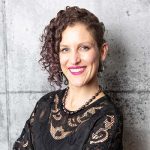 Dr. Angela Mulrooney is a global speaker, best-selling author, and personal branding expert. She works with thought leaders around the world to clarify their message through their brand archetype while using various media platforms (LinkedIn, podcasts, and the stage) to drive sales so these experts can change the world with what they know.
Dr. Angela Mulrooney is a global speaker, best-selling author, and personal branding expert. She works with thought leaders around the world to clarify their message through their brand archetype while using various media platforms (LinkedIn, podcasts, and the stage) to drive sales so these experts can change the world with what they know.
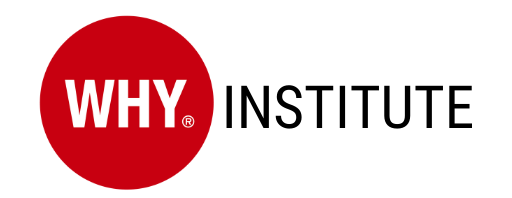
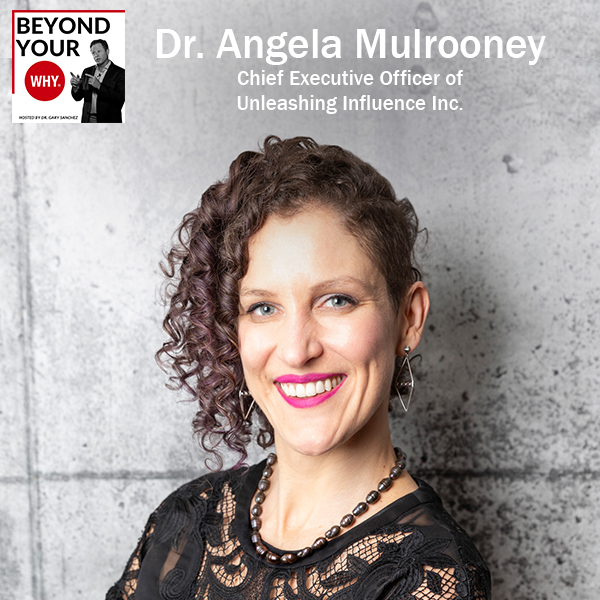
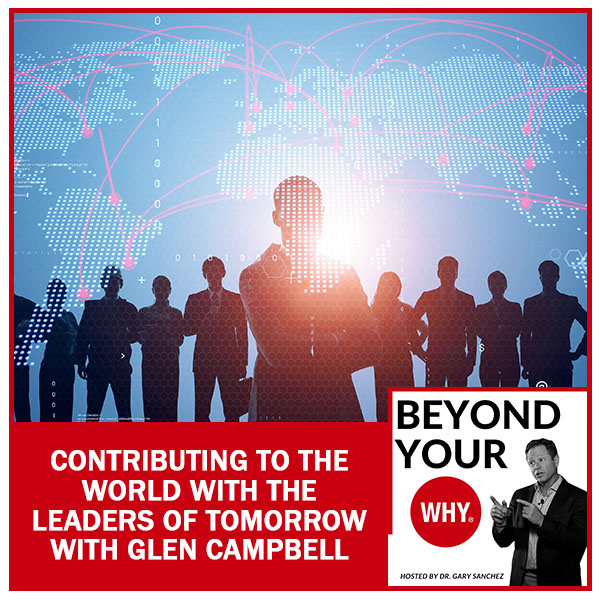
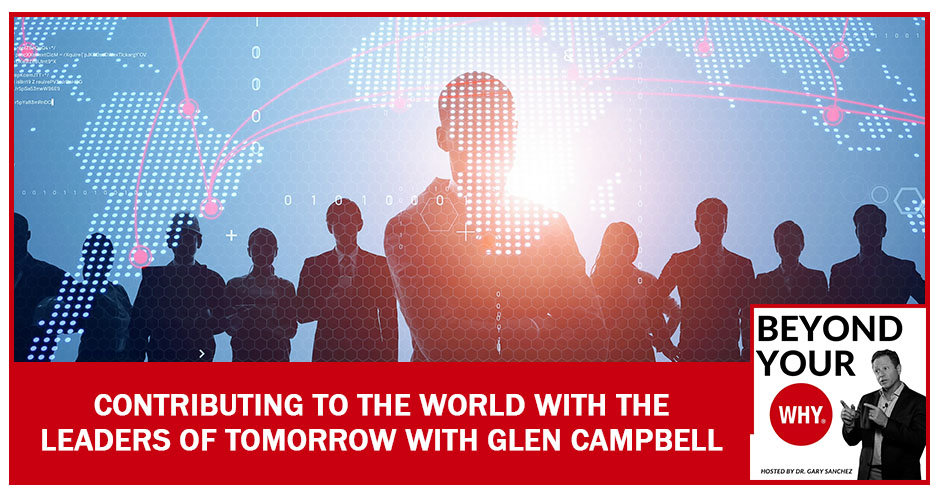



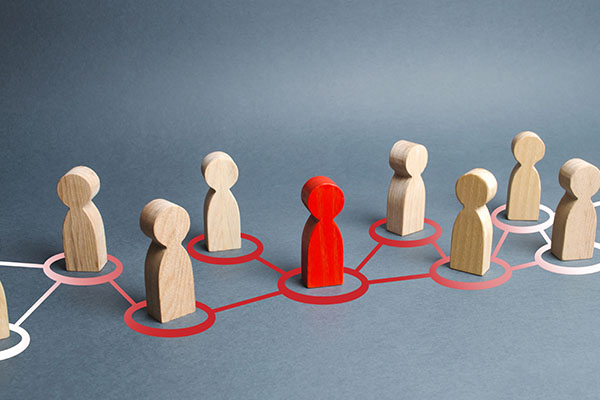

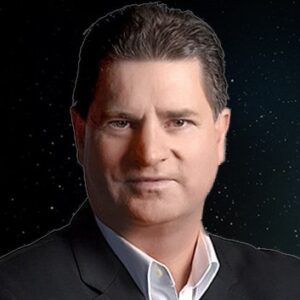 Glen started his career with degrees in Commerce and Psychology. He alsohas a Masters in NLP and Hypnotherapy.
Glen started his career with degrees in Commerce and Psychology. He alsohas a Masters in NLP and Hypnotherapy.